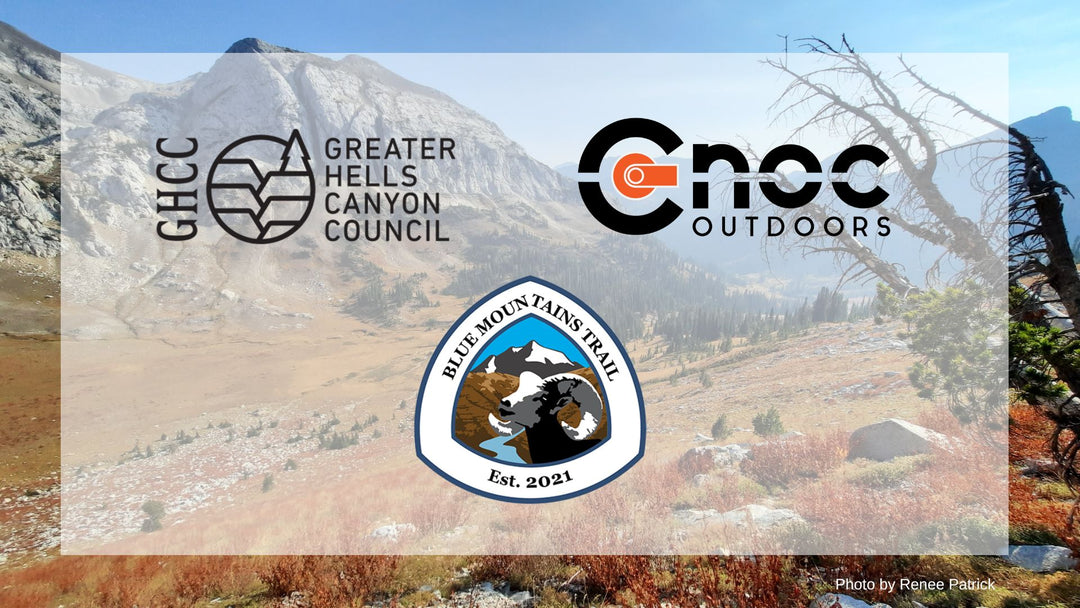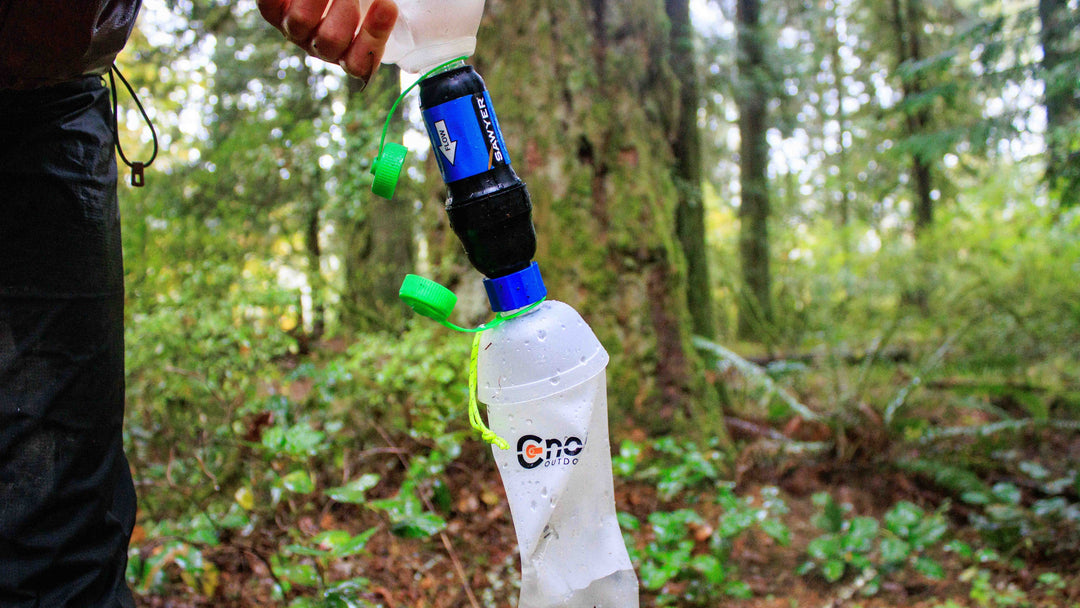How not to get lost outdoors
What does it mean to be lost outdoors? We sure all know how it feels, but how does it happen? How do we actually “get lost,” and what can we do to avoid it?
The Oxford dictionary defines lost as ‘unable to find one’s way; not knowing one’s whereabouts’. So being lost is when you can’t find where you are trying to go, or when you can’t find where you are. Is it a future problem (where do I go?), or is it a present issue (where am I?). In his book, Deep Survival, Laurence Gonzales defines lost in a way that combines both the present and the future dilemma of being lost – he defines it as “Bending the map”.
What does “bending the map” mean? When we are in an unfamiliar place, especially outdoors, claims Gonzales, we create a mental map of our surroundings to place ourselves in, which allows us to evaluate distance to objects and places around us. The problem, or how we are get lost, is when we are in unfamiliar places and not updating our mental map quickly enough. Our minds insist we are somewhere we are not, even if the map, compass and the environment are telling us differently. That state of not accepting our true location, and trying to force our surroundings to match our mental map, is what Gonzales means when he refers to bending the map.
Let’s look at an example: you have a map, a compass and a pre-set route on the map. You have been walking/running/cycling or whatever for a few hours, passing a few places you are positive you can identify on the map. After a couple of hills, you look at the map and you know exactly where you are – you don’t even need to look around you. An hour later you are not so sure where you are, and when looking at the map, you are sure you are at that ridge, or is it the one next to it? So you look around, you are pretty sure the tree line is that on the map, and the hill over there is right here on the map. In fact, you are actually just bending the map instead of properly taking the time to find the map location based on the surroundings, and so getting yourself lost outdoors.
I used to do this a lot – tell myself the area fit the map, instead of looking around, see what is around me, measuring properly, and then going to the map to find that location. We have all done that, and so we all have gotten lost outdoors, many times. Usually it is not a serious matter – a couple of hours more outside, a detour on the trail or just reaching camp late. But when outdoors, getting it seriously wrong needs to happen only once, and it is usually deadly.
Now that we know how we get lost, let's work to avoid it:
Step one - have the right mind set
The most important thing when going outdoors is leaving your ego at home. Yes, good old humility is all that is needed to be able to navigate securely outdoors – accept that you might be wrong, be ready to go back, question your location assumptions and check again (and again). Self-confidence in navigation is important, otherwise you won’t go anywhere, but make sure to really double check yourself when you look around – don’t bend your map!

Step two - know how to navigate with a map and compass
To navigate means to know where you are (so, not be lost) while knowing where you are going. It is not accidental that the definition has two parts and we will look into both of them separately, but first we will need to define a few important tools.
Bearings
Bearings often are confused with azimuths (see below). Bearings are always used within a quadrant and are never bigger than 90°. A bearing is represented by its north/south reference, the angle from the east or west line and the east/west reference, ie: N20°E. This example is in the north-east quadrant, 20 degrees north of the eastern line. This is a tricky one but a bearing is always the relationship between the north-south line and the east-west line.

Azimuths
Azimuths are the angle between the north/south line, and an imaginary line between you and an object/location you are headed for. The important thing to understand about azimuths is that azimuths are measured in angles. Those angles are always measured clockwise starting at 0° up to 359(.999…)°.
Bearing vs Azimuth
To add to the confusion, azimuths are very often called bearings (I make the mistake too!) and most of the time when we are “taking a bearing” we are actually taking an azimuth. To make it simpler, let's see how both of those behave using a simple graph:

- Line A-B - Azimuth: 300°, bearing: N30°W (30° northwards of W)
- Line B-A - Azimuth: 210°, bearing: S30°E
- Line D-C - Azimuth: 45°, bearing: N45°E
- Line E-F - Azimuth: 170°, bearing: S80°E
I guess you are getting the point by now. When seen visually it makes a lot more sense than those random words about angles, quadrants and reference points.
Practical navigation
When we navigate with a compass and map we utilise the compass’ ability to show the north and offer an azimuth with the ability to “pin point” specific features and objects on the map. To use them together effectively we need make sure they are properly aligned so that our map is oriented with the north.
Orienting a map
The problem with orienting a map to point to the north, is that in reality we have 3 norths: magnetic (true) north, geographical north and grid north. The distortion between the norths is called a declination and it can be corrected to compensate for it. So how do you properly orient your map?

- Check the declination on your map (should be at the bottom of the legend next to the scale), make sure you understand what the needed correction is (is it an east or west correction and how much), if it is an east correction you need to add the degrees and if it a west correction you need to subtract. [see above]
- Place your compass in your hand, but make sure there are no metallic/magnetic objects nearby (a watch, pocket knife etc) and you are away from railroads or any other big metallic objects. [pic 1]
- Rotate the azimuth dial until the orienting arrow is aligned with the DOT arrow.
- Rotate the azimuth dial for the declination correction (+/-degrees). [pic 2]
- Rotate the whole compass (with yourself if you are holding the compass) until the needle “fits” into the orienting arrow. [pic 3]
- Place the compass on the map and rotate the map until the orienting lines are aligned with the map grid.

That is it, the map is now oriented. It ma look like a tedious and long process but with practice it takes seconds to do and no thinking at all (just memorise the declination in the area you are in).
Using azimuth to finding direction
We described what an azimuth is, but how do we use it? Azimuth is the angle that is created between the north base line and an imaginary line between your location and a clear object (a peak or a saddle). So in order to take an azimuth we need use the map and compass in conjunction. Here are some step by step instructions:
Finding an azimuth to follow
The idea here is to get an azimuth from the map so we can follow it while walking to an easily defined waypoint.

- Set the map on a flat surface (non metallic!)
- Find the next point of your route on the map (a peak, a saddle, a clear structure etc) [pic 1]
- Put the compass on the map so that one corner of the base plate is on your current location [pic 2]
- Rotate the compass base plate so that the DOT arrow is pointing towards your destination (the waypoint) [pic 3]
- Read the angle that is marked by the index line – that is the grid north azimuth
- Correct for declination (add/subtract the correct degrees) [pic 4]

Following your azimuth
After finding your azimuth, you will need to follow the angle. The best way is to find, in real life, the object you pinpointed on the map to get the azimuth and just head towards it.- Place the compass flat in your hand (and away from all metals) so you can look at it at roughly a 45° down angle
- Make sure the needle is fitted in the orienting arrow
- Keep your head steady and just move your eyes from the compass to the object until you are sure you have located the right one
- Put the compass away and start walking (or use any other means of movement)

Checkpoints and other methods to follow an azimuth
Sometimes it will be difficult to follow your azimuth due to limited visibility, obstacles on the way or if you are going a great distance. To help with this, it is useful to pick checkpoints. Checkpoints are used to break the journey into legs that can be easy to recognize; aim for a checkpoint every 1km or so to be able locate it easily.If you have an obstacle in your way, such as a body of water, dense vegetation or cliffs, go back to your map and plan a route around it that uses 90° changes:
- Stay on your azimuth until you reach your obstacle
- Turn 90° (using your compass) and walk a set distance to go around the obstacle (point C)
- Turn 90° again towards your original azimuth (point D)
- Cover the length of the obstacle and turn 90° again (point E)
- Walk back the same distance you have covered previously to go around the obstacle until you are back on your original azimuth
- Take another 90° turn to resume your original DOT (point F)

In poor visibility you can use the spiral search method so you don’t miss your target location when conditions mean you can’t see very far: walk in a 90° spiral so each time you increase the distance covered based on your visibility conditions (see image): start by picking an object at the edge of your visibility. Walk to this place while pacing yourself so you know how far that distance is, turn 90° and walk twice the length of that distance, turn again and walk three times the distance, and so on. By using this method you will be able to see the whole area that you cover and not miss your target.
Pinpointing your location
Pinpointing your location is probably the most important thing when we are outdoors in a place we don’t know. Our tendency to “bend the map” and force our environment into the wrong mental maps is the main reason we get lost outdoors. If you have a map and compass there are a few simple ways to find your location:
Back azimuth
If you are in a place that you see an easily recognizable feature (you must be 100% sure about it), you can find your location using a back azimuth (the angle between north/south and the imaginary line from your target object to you):- Find your favorite object
- Set the compass so that the DOT arrow points to the object
- Fit the needle into the orienting arrow
- Read the azimuth set by the indexing line
- Correct for declination (from magnetic north to grid north)
- Find the object on the map
- Orient the map
- Calculate the back azimuth
- If the azimuth is greater than 180° (such as 215°), deduct 180° from it (215°-180°=35°) to find your back azimuth
- If the azimuth is less than 180° (such as 68°), add 180° to it (68°+180°=248°) to find the back azimuth
- Place one of the back corners on the object you choose
- Set the back azimuth so it is on the indexing line
- Rotate the compass until the needle is in the indexing arrow
- The base plate’s ruler will lead you to your location on the trail

Triangulation
Triangulation is the advanced version of back azimuth as it is more accurate and promises a more precise pinpoint to your location. The process is simple and only adds a little more to the back azimuth:
Find 3 (or more) objects around, this time 95% certainty is enough, and get a back azimuth from each.
When marking them on the map, draw a line with a pencil along the base plate ruler.
Your location is the meeting point of all three (or more) lines.

Slope aspect
Another method to find your location is to get a reading of slopes around you and use them to pinpoint your location. To do so you need to know roughly (the grid square) where you are.- Find a slope near your location.
- Stand facing the slope so that you are 90° to the grid lines (you will need to use your imagination here).
- Get the azimuth of the slope. [pic 3]
- Find a slope in your grid square that matches that slope. [pic 2]
- If unsure, get another aspect to double check. [pic 1]

Tools for navigation
When you navigate with a compass and map, having those two is obviously a must; but a handful of other things will help you with your navigation:- Map cover – it can be as simple (and cheap) as a zip lock bag, but a map cover makes map reading in bad weather much easier.
- String for you compass – useful to attach the compass so you won’t lose it and as a much longer ruler when plotting a route on the map.
- Pencil – if you plan on pre-setting a route use the pencil to mark it, including deviations and write the azimuth so you won’t have to recalculate every time you change course or take a break.
Wrap up
When learning to navigate with a compass and map the process of navigation seems big and daunting, but it is just a matter of practice. It is best to start small on trails you already know and practice as much as possible; get a map of your area and a compass and work on getting azimuths and pinpointing your location. Work on learning your pace and following an azimuth locally so when you are off the beaten track in the backcountry, it will come as a second nature to find your location and your destination.
Enjoy your navigation but do so safely, don’t just pick up this guide and head off. Keep your head leveled and ego at home - don't bend the map and don't get lost!










Perhaps your step one under Orienting a map is just written in a confusing way. But if your local magnetic declination is 15˚ West – you would add 15˚ to an azimuth taken off a map, not subtract it. A map azimuth of 45˚ would become 60˚ on the compass to point in the correct direction. But, if your local mag. declination is 10˚East, you would subtract 10˚ from an azimuth taken off your map, not add it. For an azimuth of 45˚ measured on the map, you would set the compass to 35˚ to have the compass direction of travel arrow point in the correct direction.
The military guys often use the acronym LARS, left add right subtract. West is left of north, East is right of north. I prefer my own acronym, WAvES: West Add v East Subtract.
However, when you are taking an azimuth measured with the compass back to the map. As when doing triangulation to find your present location. Then you reverse the math. You subtract the number of degrees of west mag. declination. 260˚ azimuth measured with the compass would become 245˚ on the map, if mag. declination is 15˚ west. That is why when you look up mag. declination online for your location ; west mag. declination is listed as negative degrees (-15˚). If you where where mag. declination is 10˚ east, and with the compass you measured 260˚ , on the map you would need to use an azimuth of 270˚ (260˚ + 10˚).
On the other hand. If you correctly orient the map to local terrain (taking into account the local mag. declination) before taking an azimuth off the map, then the azimuth set on the compass will already be correct for the local mag. declination.
To correctly orient the map: Set the compass degree dial with N at the index line. Place the compass parallel to the n-s grid line, direction of travel arrow pointing to north on the map. Rotate map & compass together until the compass arrow is aligned over the orienting arrow inside the compass capsule. Then rotate the map and compass together until the compass arrow is pointing at the correct number of degrees of mag. declination on the fixed declination scale printed inside the compass capsule. If your local mag. declination is 15˚ west, you will rotate the map cw by 15˚. If your local mag. declination is 10˚ east, you will rotate the map ccw by 10˚.
Leave a comment